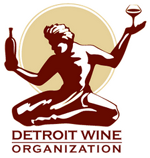Chile and Argentina are hot – and not just climatically. The past 15-20 years have seen an explosion in wine quality, production and exports from these countries that have been producing wine for over 400 years. Kevin Zraly, author of Windows on the World Complete Wine Course, says “… the best value in red wines of the world today comes from Chile.” We’ll be exploring these wines at our next Wine Down Wednesday so let’s take a look at what all the fuss is about.
Chile and Argentina began producing wine in the sixteenth century, but it was not until the mid-1980’s that the quality of their wines and the political situations in their countries allowed them begin competing in the international marketplace. Argentina is actually the fifth largest wine-producer in the world, yet until recently winemakers concentrated on producing inexpensive bulk wine for domestic consumption. Today, 90% of Argentinean wine is still consumed in Argentina. But, the wines that do make their way to the international marketplace are good quality and reasonably priced.
Seventy-five percent of Argentina’s wines are produced in the Mendoza region and the best of them are red. Malbec, a French variety grape from Bordeaux, is probably Argentina’s greatest claim to fame. It’s deep color and unique flavor are helping it grow in popularity throughout the world. Other grapes include Cabernet Sauvignon, Merlot, Syrah and Chardonnay.
Most of Chile’s vineyards lie in the central valley area, between the coastal range and the Andes. Major grape varieties grown here include Cabernet Sauvignon, Merlot, Carmenere (a red grape brought to Chile from Bordeaux in the nineteenth century which, for many years, was misidentified as Merlot), Pais (used mainly to make wines for domestic consumption), Malbec, Sauvignon Blanc and Chardonnay. The eastern area, near the Andes is sunnier and drier and the western area is more damp. Aconcagua, is the warmest region, too warm for many grape varietals. A subregion of Aconcagua, Casablanca, is near the coast and much cooler, allowing it to produce some excellent Chardonnays and Sauvignon Blancs. Maipo is Chile’s oldest wine region and where many of the major wineries are based. Maipo is known for Cabernet Sauvignon and Semillon. Rapel and its subregions (including Colchagua), produce excellent Merlot, Malbec, Syrah, Carmenere and Chardonnay. The Curico Valley makes dark, full-fruit wines with lots of tannin.
Wines from Chile and Argentina are, at the moment, a great value. Quality products at some of the lowest prices in the marketplace. But, like all good things in life, many people are predicting that the prices of these wines are bound to inch up as they become more and more popular. So, our advice – join us on February 25 and learn more about these great wines so you’ll know what to buy while the prices are still low!
Tidbits to Amaze and Delight Your Friends
Malolactic Fermentation – sounds a bit like something forgotten that happens to milk in the back of your refrigerator, doesn’t it? Actually, it can be an important part of winemaking. Between the fermentation of the grapes and the aging of the juice, malolactic fermentation (MLF) is often introduced to help add complexity and reduce acidity in a wine. Basically, what happens is that malic acid, which is very acidic, is acted on by a special bacteria, giving off carbon dioxide and turning the malic acid into lactic acid, which is also found in milk. This smooths the flavor of the wine and can add buttery or creamy overtones. Still confused? Don’t worry, this will all make much more sense next time, when we explore how wine is made…


Leave A Comment